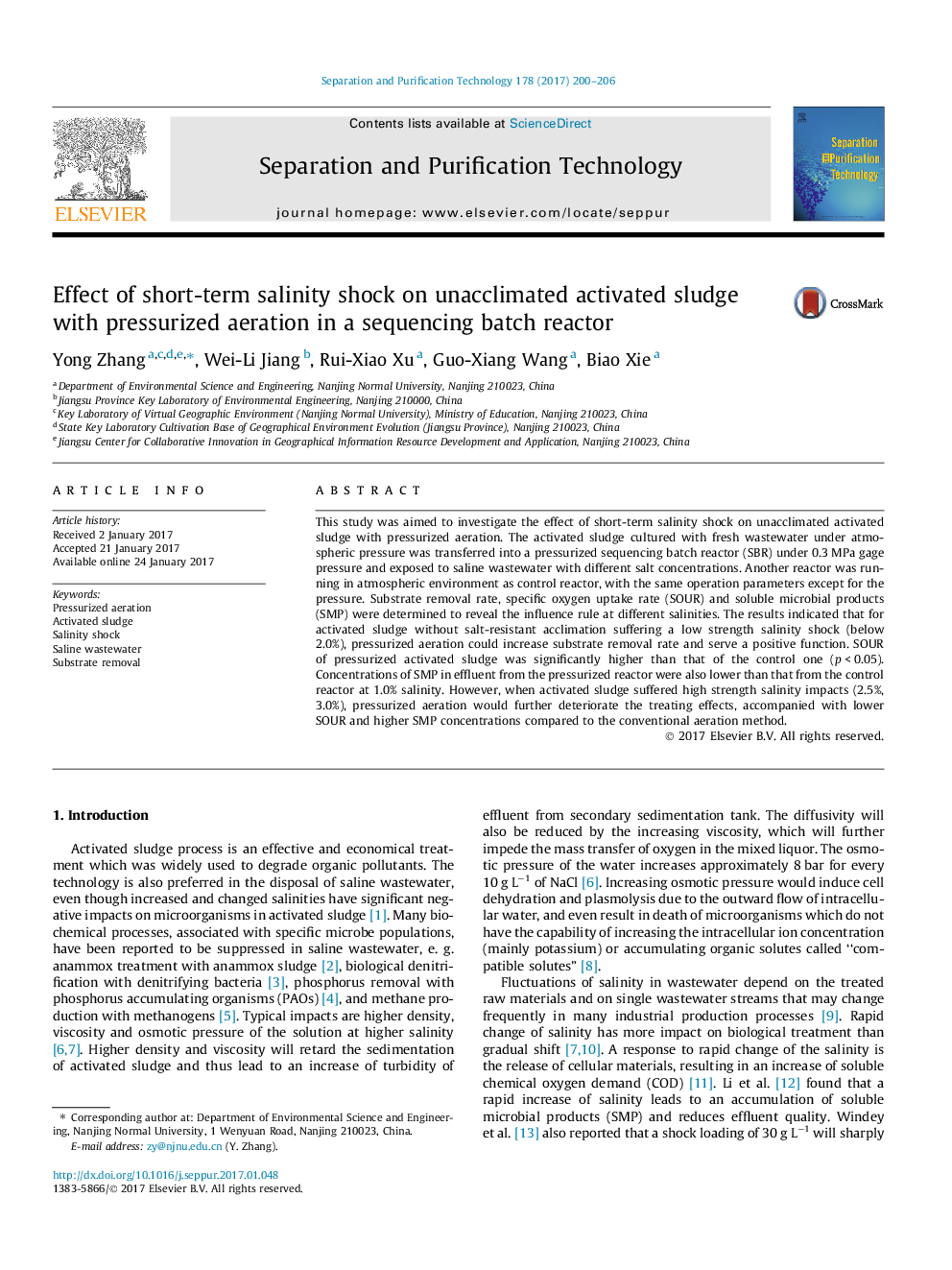| Article ID | Journal | Published Year | Pages | File Type |
|---|---|---|---|---|
| 4990039 | Separation and Purification Technology | 2017 | 7 Pages |
Abstract
This study was aimed to investigate the effect of short-term salinity shock on unacclimated activated sludge with pressurized aeration. The activated sludge cultured with fresh wastewater under atmospheric pressure was transferred into a pressurized sequencing batch reactor (SBR) under 0.3 MPa gage pressure and exposed to saline wastewater with different salt concentrations. Another reactor was running in atmospheric environment as control reactor, with the same operation parameters except for the pressure. Substrate removal rate, specific oxygen uptake rate (SOUR) and soluble microbial products (SMP) were determined to reveal the influence rule at different salinities. The results indicated that for activated sludge without salt-resistant acclimation suffering a low strength salinity shock (below 2.0%), pressurized aeration could increase substrate removal rate and serve a positive function. SOUR of pressurized activated sludge was significantly higher than that of the control one (p < 0.05). Concentrations of SMP in effluent from the pressurized reactor were also lower than that from the control reactor at 1.0% salinity. However, when activated sludge suffered high strength salinity impacts (2.5%, 3.0%), pressurized aeration would further deteriorate the treating effects, accompanied with lower SOUR and higher SMP concentrations compared to the conventional aeration method.
Related Topics
Physical Sciences and Engineering
Chemical Engineering
Filtration and Separation
Authors
Yong Zhang, Wei-Li Jiang, Rui-Xiao Xu, Guo-Xiang Wang, Biao Xie,
